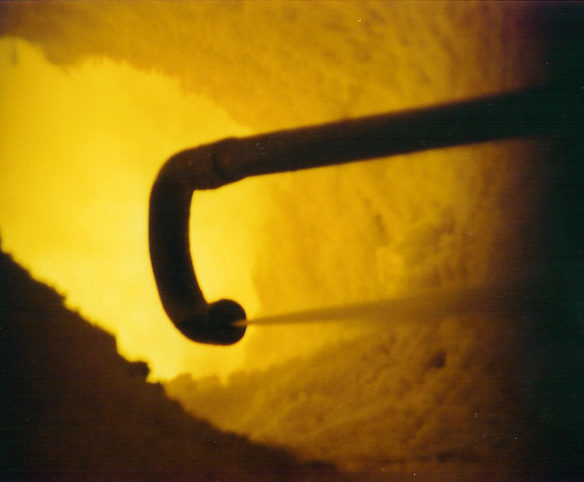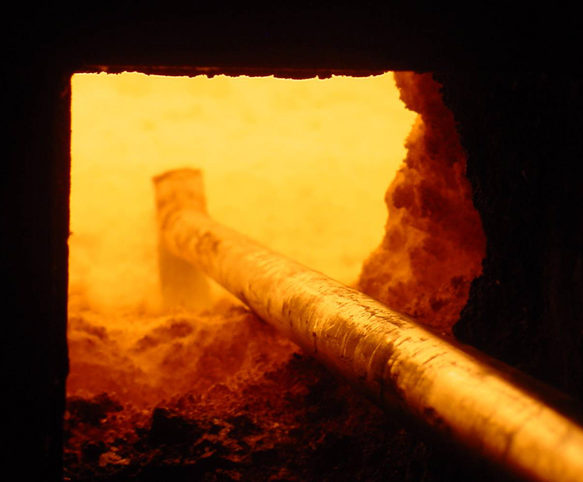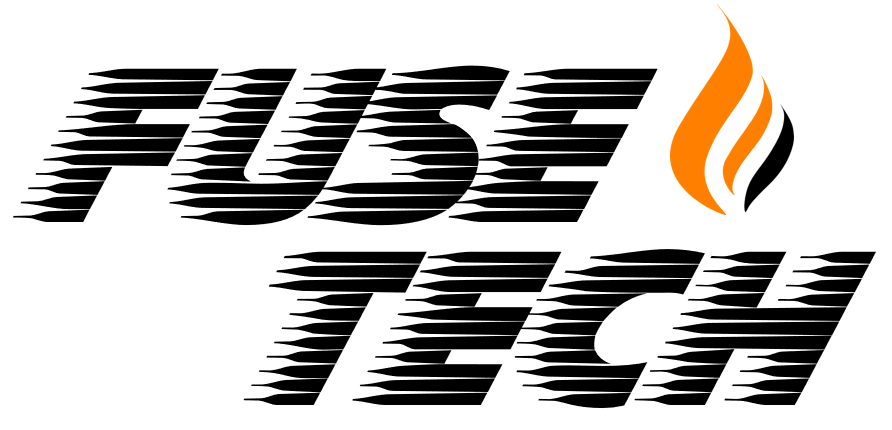FURNACE INSPECTIONS
Fuse Tech offers high temperature industrial furnace inspections. Using a water-cooled periscope our high-temperature imaging system provides you with valuable insight into what is going on in your kiln or furnace, enabling you to view areas or actions that may not be visible through normal line of sight.
High definition, raw and refined images, as well as Power Point presentations can be provided to aid in describing your furnace conditions along with the need and method of repair if necessary.
Information of this type makes excellent historical records to be reviewed and updated over the campaign life of the industrial furnace and is useful for upper management in understanding the value of Fuse Tech’s offerings.


Why Checker & Port Cleaning?
- Maintain optimal heat transfer and furnace performance
- Ensure production efficiency
- Reduce gas and electric energy costs
- Reduce high temperature furnace pressure
- Expand furnace campaign life cycle
- Support facility and employee safety
CHECKER & PORT CLEANING
Checker and port cleaning of your industrial high temperature or glass furnace is essential for optimum performance as well as safety. Over time, debris collects during the process from melted glass at the port neck and mouth, causing airflow to become restricted. Specialist services provided by Fuse Tech include the removal of solid deposits in checker port necks, and on top of regenerator packings, using extremely high pressure water lances.
Fuse Tech has safely and successfully carried out hundreds of checker and port cleaning operations in all types of glass and industrial (regenerative) furnaces, helping to ensure long term performance and efficiency.
Ensuring your glass furnace is operating in top condition will provide the highest long-term return on investment, increase production efficiency, and help keep team members free from hazardous conditions.
When to Conduct Checkers and Port Cleaning and Maintenance
Checker and port cleaning should be conducted as soon as plugins and debris are detected to prevent the impairment of optimal furnace operations and avoid checker problems. There are two chambers within a checker, one with air entering for combustion, one for exhaust. As one chamber is heated, exhaust gases exit through the opposing side, cooling internal gases. The port is positioned on top of the checkers, with new gases injected in the port at the furnace. Over time, debris collects during the process from melted glass at the port neck and mouth, causing airflow to become restricted. Our high-pressure, custom pumps are designed specifically for safe and effective industrial furnace buildup removal and furnace cleaning.
Our port and furnace cleaning process not only provides a cost savings, but often, in older commercial furnaces, a reduction in fuel with resultant reduction in combustion air that may be very helpful to relieve some furnace pressure on an old and heavily worn exhaust system.
Benefits of Checker and Port Cleaning
Checker and port cleaning services from Fuse Tech provide performance and economic benefits. Cleaning of blockage or debris improves operating efficiency. Debris or a clogged furnace can have a significant detrimental impact on furnace efficiency, resulting in increased energy and production costs. With blockages, additional energy from the burner is required to achieve optimal internal furnace temperatures. Furnace performance can also be affected by the reduction of available exhaust cross air flow and thus higher furnace pressure. Additionally, to help ensure the safety of workers at your facility it is important to take the necessary steps to keep your industrial furnace well-maintained and clean on a regular basis.
Fuse Tech’s proven method for checker and port cleaning uses a water-cooled lance that reaches through the regenerator target wall, across the checker pack and through the port to the hot face. The lance is designed to “fire” the laser stream back toward the regenerator. Once the lance is in place, a protective shield is placed in front of the hole to stop debris from hitting the operator without obstructing their vision. Water pressure is then turned on and increased to the level needed for effective debris removal.
The operator can then slowly move the lance across the port floor, “blasting” the collected debris back into the regenerator. Due to the extreme pressure and thermal shock of the water, debris comes out of the port in small pieces, which is able to fall through the checker pack to be removed below the rider arches. This process is only done on the exhaust portion of the reversing cycle to assure that all the debris goes toward the regenerator and does not contaminate the glass bath.


